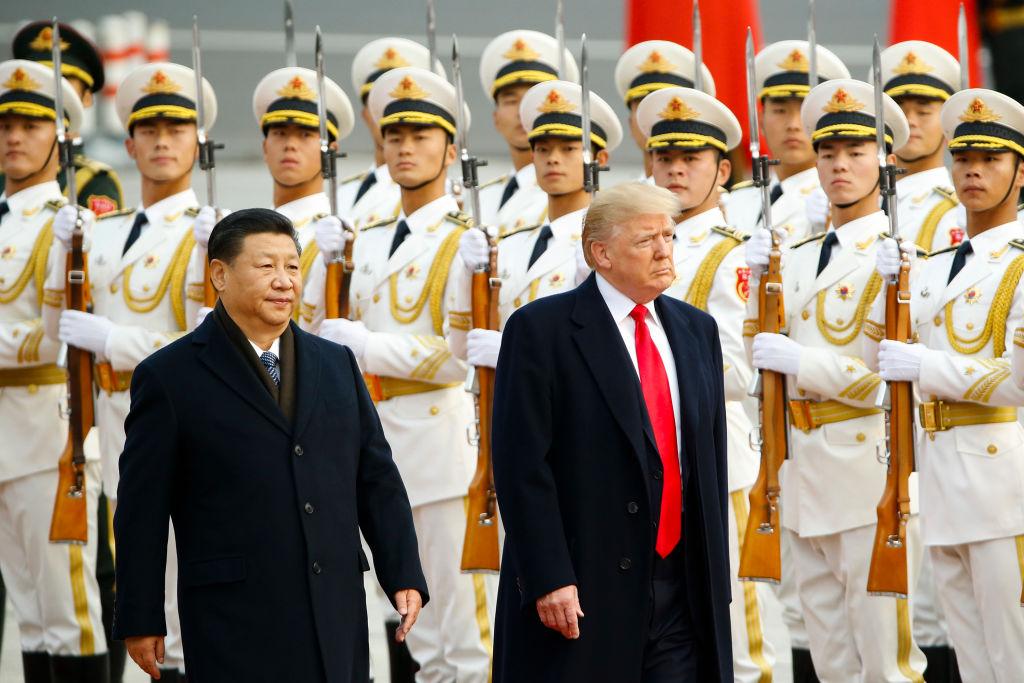From the bookshelf: ‘The Indo-Pacific: Trump, China, and the new struggle for global mastery’
Posted By Mark Beeson on December 2, 2019 @ 11:16

There’s no shortage of books about the growing strategic and economic competition between China and the United States. Adding something distinctive and worthwhile to the literature, therefore, is no easy task. The Indo-Pacific: Trump, China, and the new struggle for global mastery [1] manages to do just that, and demonstrates why Richard Heydarian has rapidly emerged as one of the more interesting and original analysts from a Southeast Asian region that will be profoundly influenced by the actions of extra-regional major powers.
One of Heydarian’s great strengths, and one of the reasons that he stands out from some of his Southeast Asian contemporaries, in my view, is that he doesn’t feel obliged to recite the usual pieties about ASEAN centrality and the like. On the contrary, he is frequently excoriating in his criticism of some of the region’s luminaries, especially Rodrigo Duterte in the Philippines, about whom he knows a great deal.
Indeed, the general level of detail and the extensive footnoting in this book are remarkable and a potentially useful resource for any student or scholar wanting to develop an understanding of the factors that are driving economic and strategic transformation in the Indo-Pacific region. After providing the reader with a finely grained analysis of regional development, though, Heydarian offers an overall conclusion that’s rather sobering: ‘The future of the region will be less about struggle for mastery than managing one cataclysmic disaster after the other.’
The region’s potentially gloomy future arises in large part, he suggests, from possibly irreconcilable developmental and environmental goals: ‘By imitating the mindless hedonism of the West, the far larger East is accelerating an ecological apocalypse.’ The reader is certainly not left wondering what Heydarian thinks about some of the most important issues confronting the region and the world.
Part of this headline-grabbing style no doubt flows from his prolific contributions to mainstream media outlets, which also explains the accessible and readable nature of this volume. Some potential readers may be relieved to know that there is almost no attempt to place the discussion in theoretical context, although Heydarian frequently draws on and quotes extensively from some of the best-known figures in the international relations field.
The result is a detailed analysis punctuated by shrewd insights about Donald Trump’s regime, Xi Jinping’s impact on China and its foreign policy, the Belt and Road Initiative, and even the role of small and medium powers in the region. There is especially welcome and knowledgeable attention paid to Japan, too, which is frequently overlooked in these sorts of studies. No doubt Canberra’s policymaking elites will be delighted to learn that Heydarian thinks this country has developed a ‘smart and constructive position’ and is ‘crucial to avoiding a Sino-American Cold War in Asia’.
Even if you accept this argument, it will not be an easy task. As the excellent chapter on the BRI makes clear: ‘as China seeks to carve out a new Sino-centric Global Order’, instability is inevitable, not least because of ‘Trump’s seemingly unhinged leadership’. The style is always lively and the judgements made with an enviable degree of certainty and confidence given the complexity of the subject matter.
Whether one agrees with them or not, though, they are always grounded in a plethora of sources, quotes and citations. As readable introductions to the region go, it is certainly one of the better informed and more comprehensive volumes in a crowded field. If there’s one potential criticism to be made of this book, it’s that it draws heavily on previously published work, which results in some repetition and inconsistency at times. While Heydarian claims that China is intent of creating a ‘neo-Tributary system’ via the BRI and other instruments of economic statecraft, for example, he offers qualified praise for the Trump administration’s efforts at pushing back against Chinese expansionism.
These positions are not necessarily incompatible, of course, and we are in the midst of a historically unparalleled competition for global influence between an ambitious Asian power and a familiar hegemon that seems to be struggling to come to terms with new international and domestic realities. Trying to make a definitive judgement about how that’s going to turn out is not for the faint-hearted.
Whatever else one might think about Heydarian, though, he’s certainly not that. Anyone seeking an accessible, knowledgeable and engaging introduction to a region undergoing profound change could do much worse. It’s generally a persuasively argued volume that addresses the big issues and has interesting and original things to say about them. Recommended.
Article printed from The Strategist: https://aspistrategist.ru
URL to article: /from-the-bookshelf-the-indo-pacific-trump-china-and-the-new-struggle-for-global-mastery/
URLs in this post:
[1] The Indo-Pacific: Trump, China, and the new struggle for global mastery: https://www.palgrave.com/gp/book/9789811397981
Click here to print.